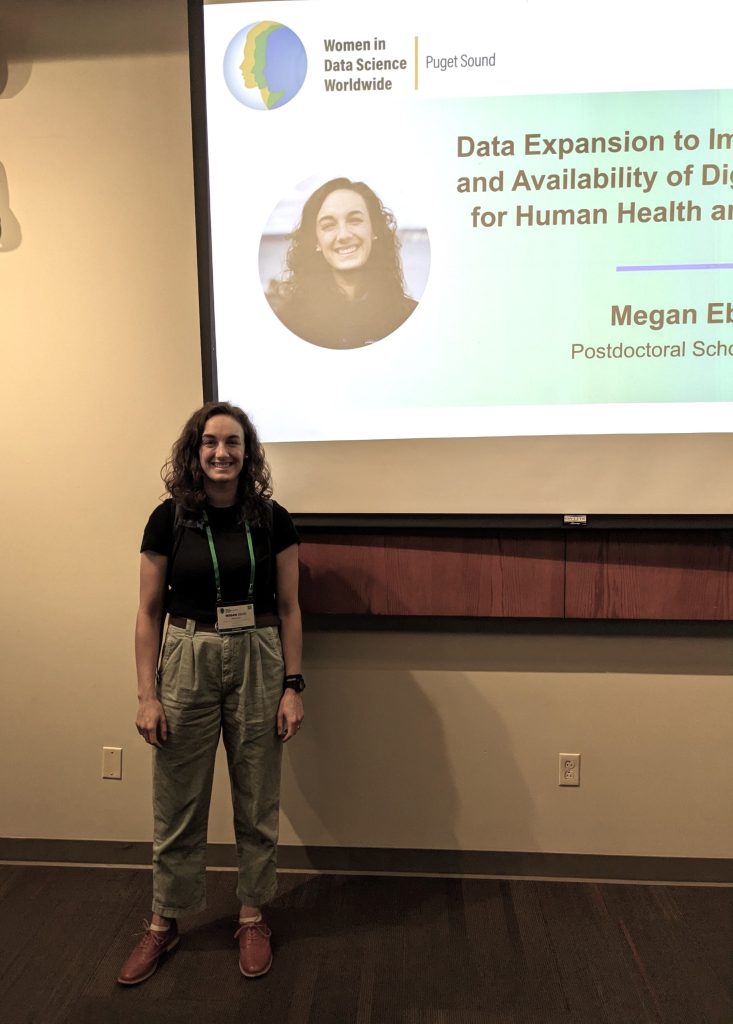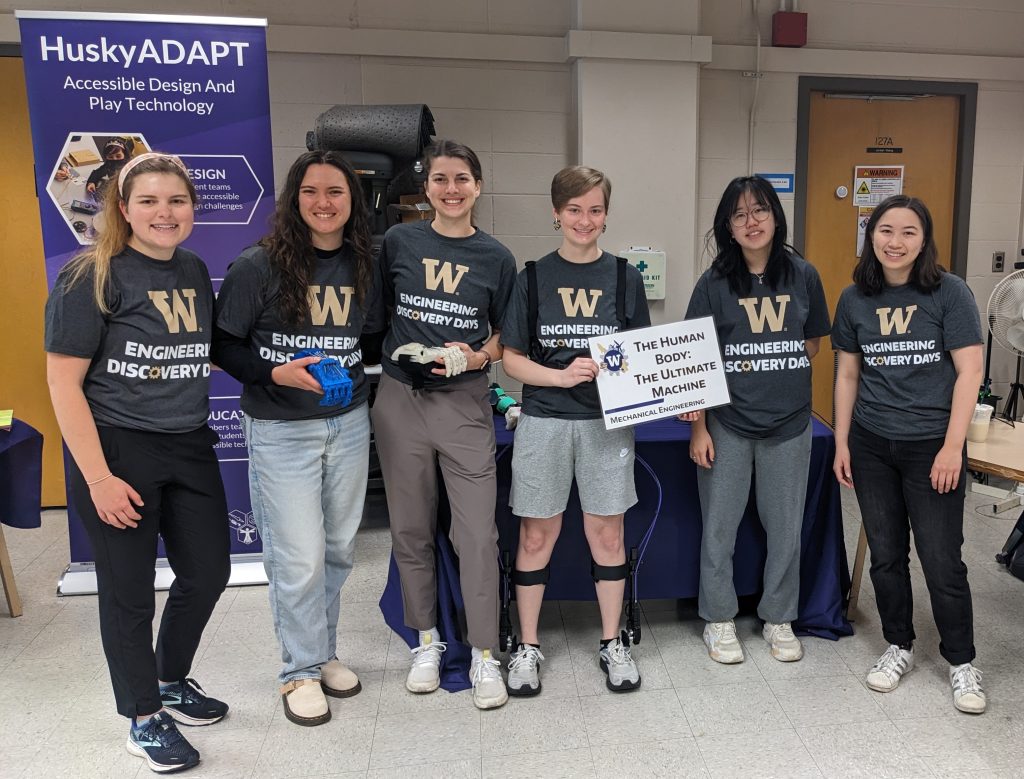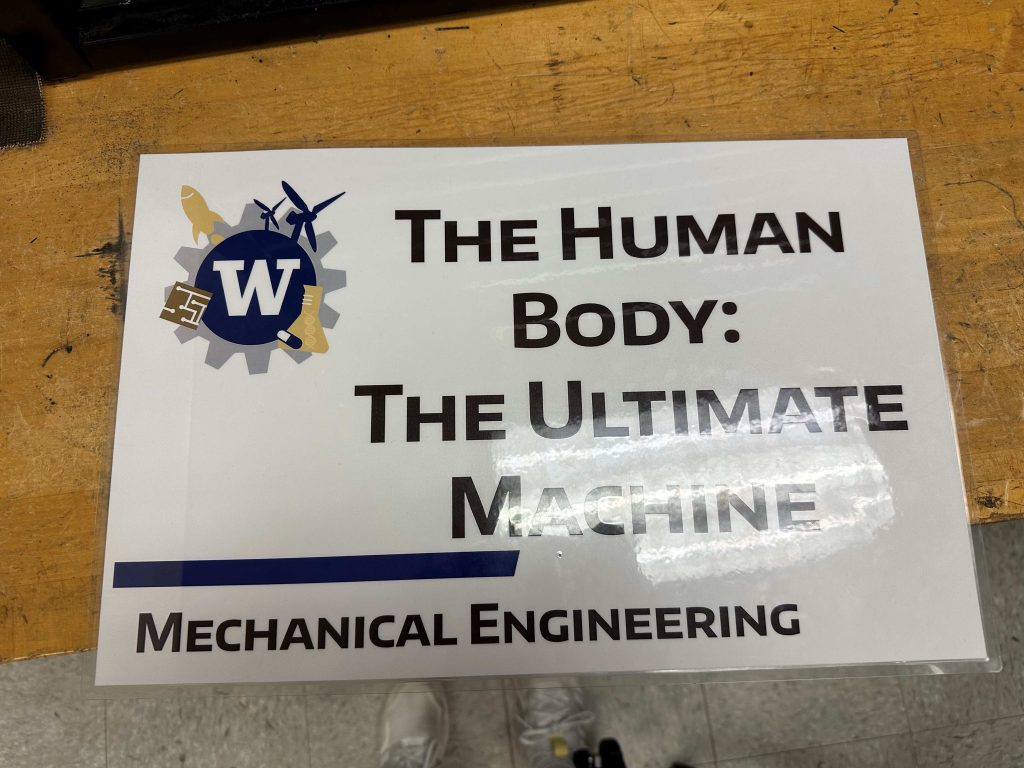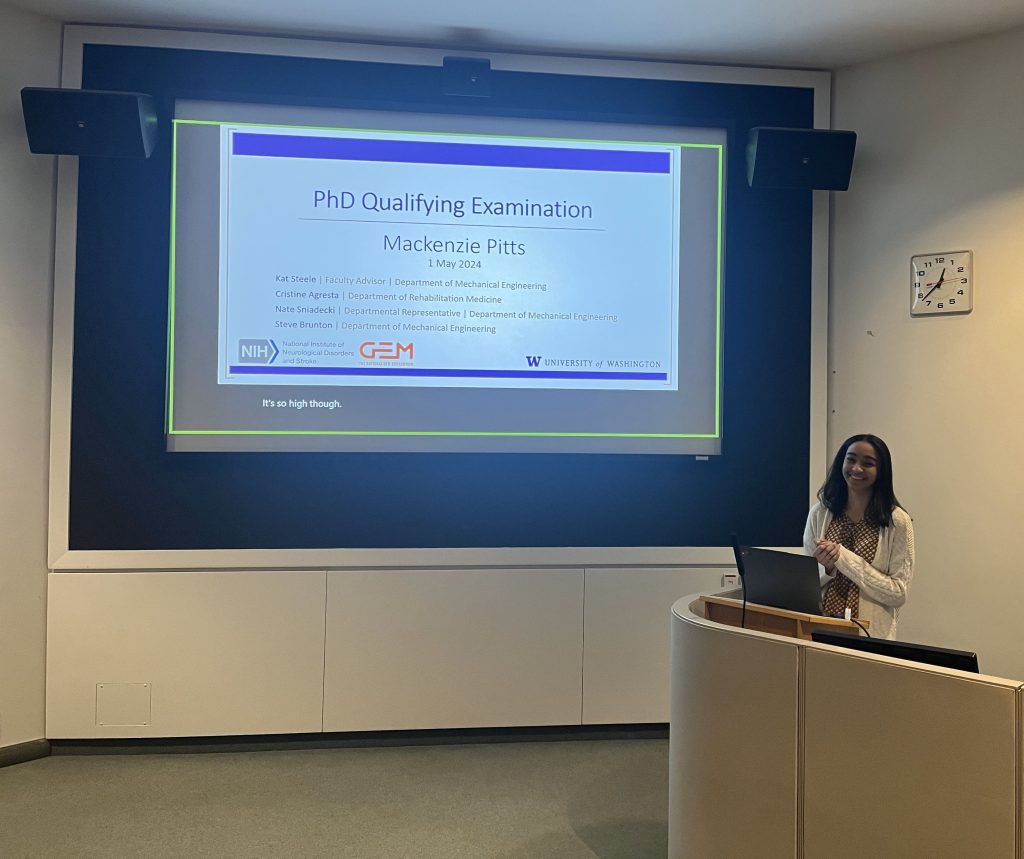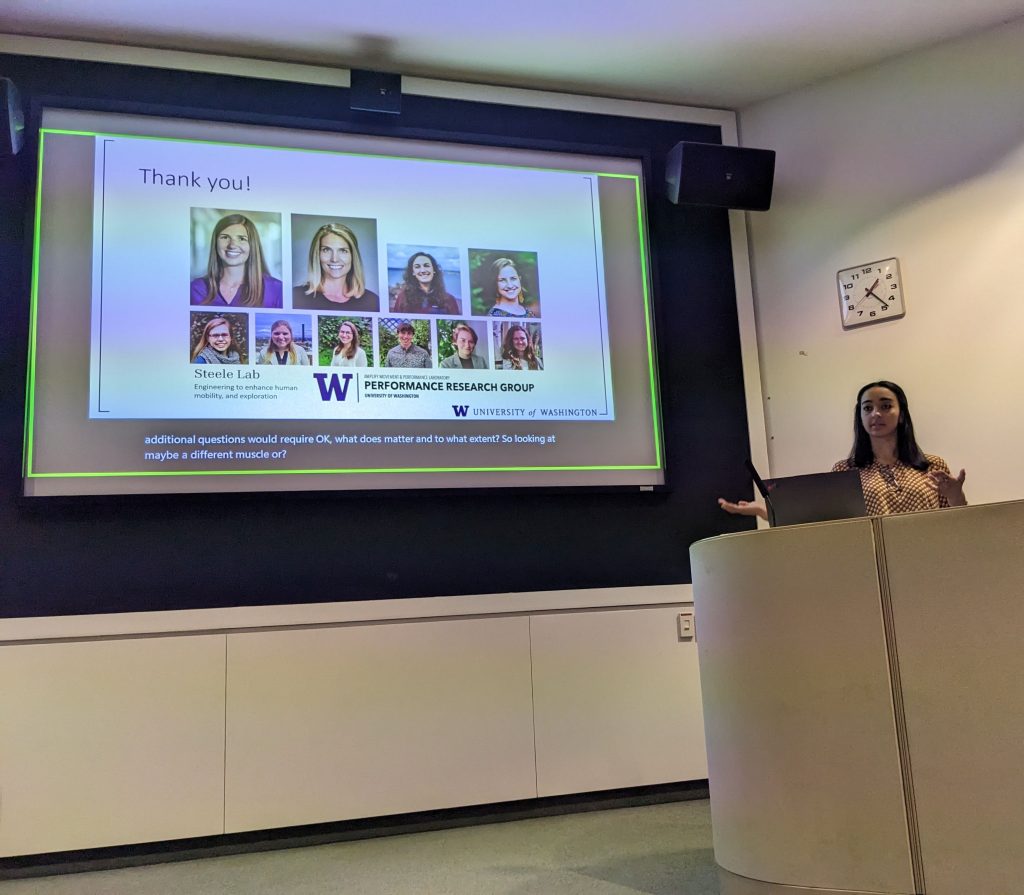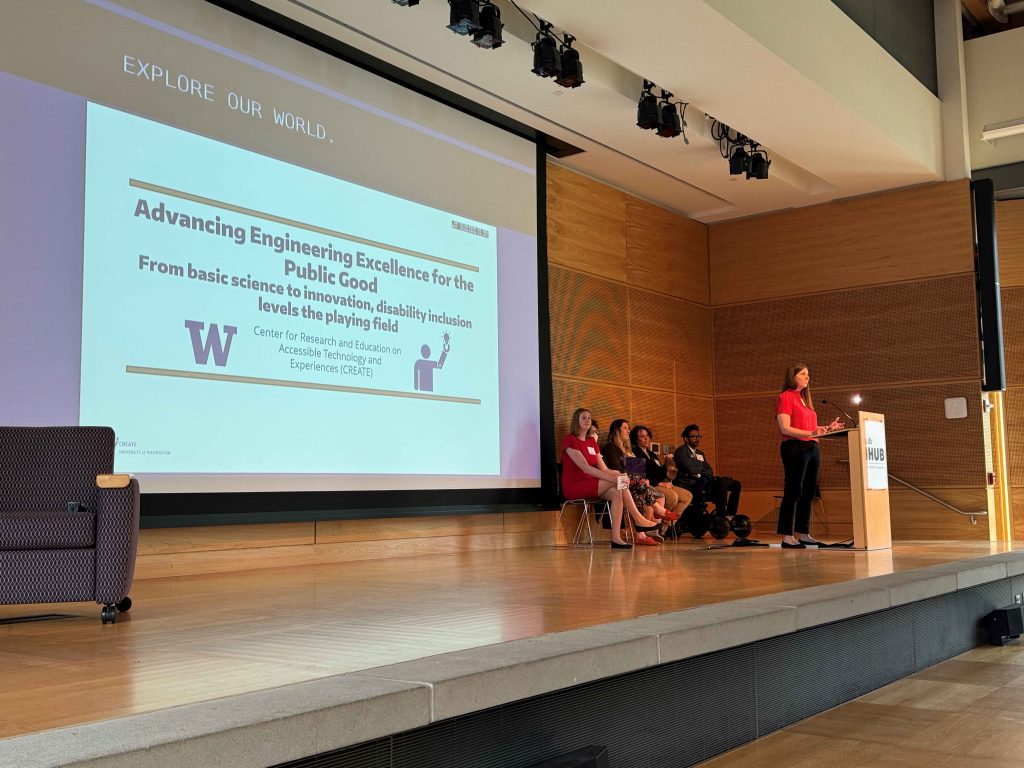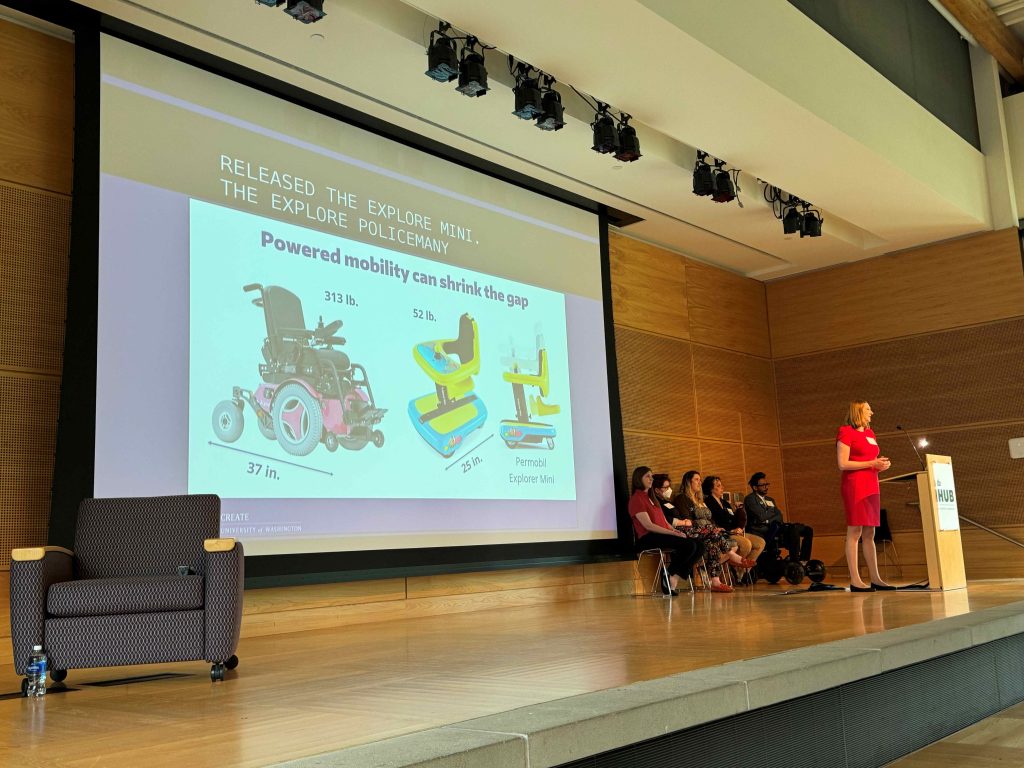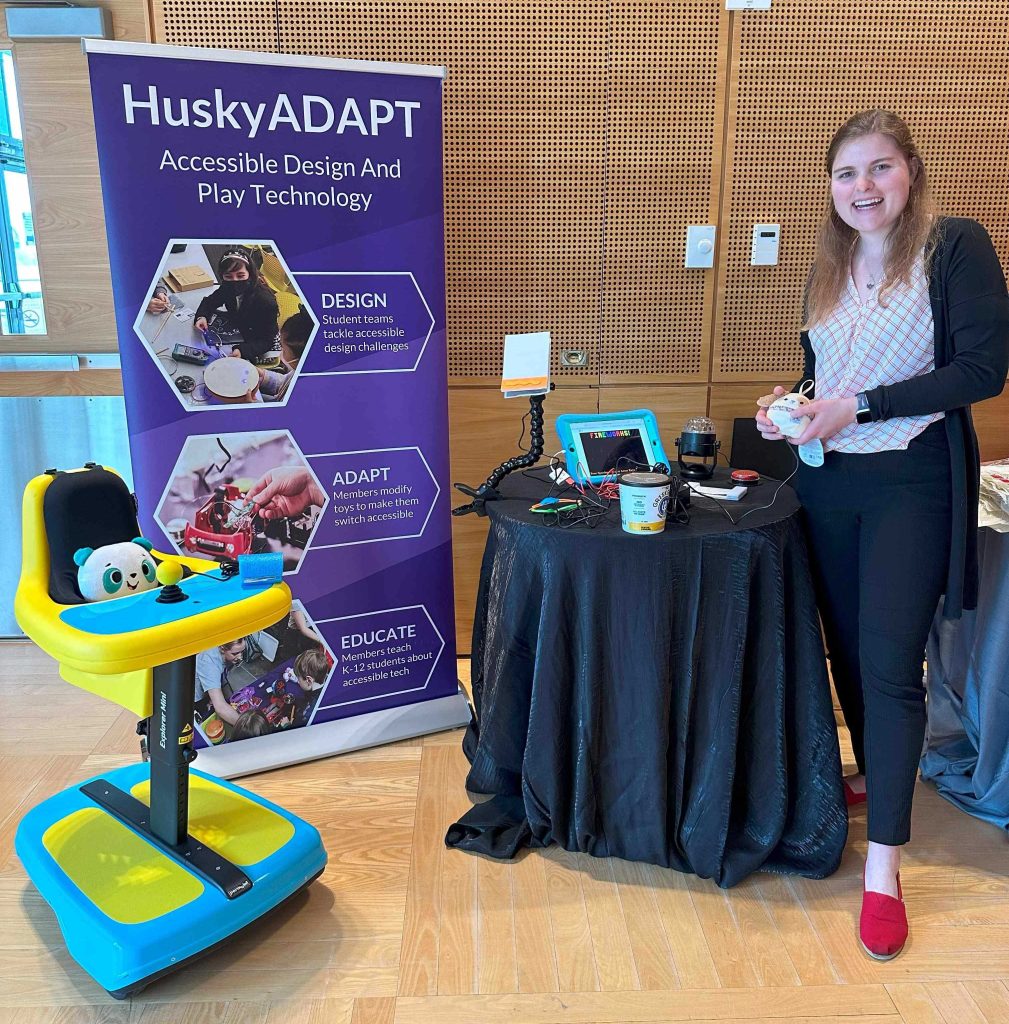On May 14, 2024, Steele Lab members Dr. Megan Ebers, Mackenzie Pitts, and Dr. Kat Steele attended the Women in Data Science (WiDS) Puget Sound conference hosted at Seattle University. WiDS aims to inspire and educate data scientists worldwide, regardless of gender, and to support women in the field.
Among the speakers at the conference, postdoctoral scholar Dr. Megan Ebers gave a presentation titled “Data Expansion to Improve Accuracy and Availability of Digital Biomarkers for Human Health and Performance.”

